If you are currently using Google Search Console to find page indexing issues, you may be coming across one particular issue which might be more difficult to solve. This is the Server Error (5xx).
In this article we will talk about what this error is, what it means, and why it’s important. We will also take you through, in detail, the different 5xx error codes and their causes, as well as how to fix these different errors.
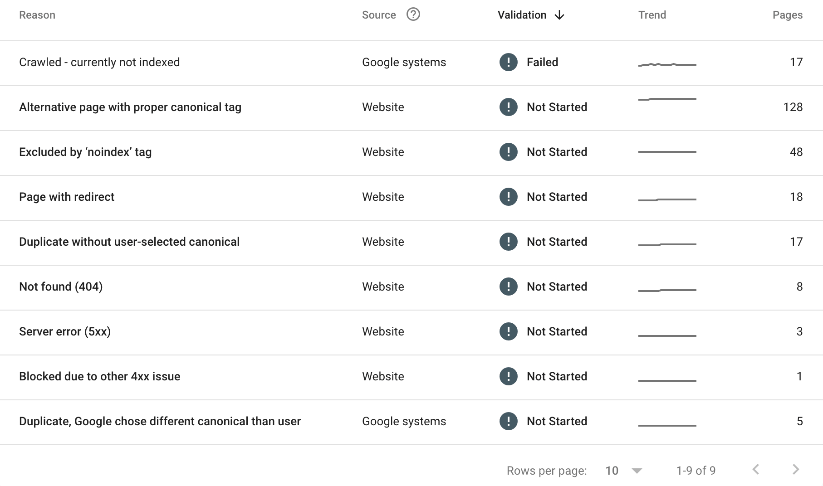
What is this Error?
A server error within Google Search Console is a type of error message that indicates a problem with the server that is hosting a particular website. This error will occur when a user tries to access a web page, but the server encounters an issue trying to fulfil that request.
The term server error refers to a problem happening on the server. This means the problem isn’t with your website, but it is a problem with the server hosting your website.
The “5” in “5xx” denotes the type of server error that is occurring. These are HTTP status codes and will be able to give you more information about the server error that is happening, why it’s happening, and how to solve it. We will dive further into these codes a little later on in the article.
What does this Error Mean?
A Server Error (5xx), shown in Google Search Console, indicates that there is a problem on the server that is hosting your website or websites.
As an experienced SEO professional, I’ve encountered these errors many times over the years.
When Googlebot tries to crawl your site and encounters a 5xx error, no matter the error, it means the server could not fulfil the request properly. This could be due to a number of reasons, including:
- Server downtime.
- Misconfigurations in your server.
- Overloaded server resources.
It’s crucial to address these errors promptly because they can (if left to fester) negatively impact your website’s search engine rankings and user experience.
To resolve them, you’ll need to work closely with your web hosting provider or your server administrator to identify and fix the underlying server issues causing the errors. This will ensure that your site remains accessible and maintains performance for both users and search engines.
Why is this Error Important?
These errors can significantly impact your website’s search visibility and user experience. When Googlebot (and the bots of other search engines) encounter 5xx errors, it means that your website is failing to provide the requested information due to server issues.
This can result in your web pages being de-indexed or ranked lower in search results, leading to a drop in organic traffic and potential revenue loss.
Additionally, a website plagued by frequent 5xx errors can harm its reputation, erode trust among users and damage your brand’s credibility. It’s essential to proactively monitor and address these errors by collaborating with your internal or external teams to ensure server stability and reliability. By doing so, you can maintain a positive online presence, retain visitors, and safeguard your SEO efforts. This will all, ultimately, contribute to your website’s long-term success.
The Different Error Codes & Their Causes
In this section, we will take you through all of the 5xx error codes and their causes. Going through this section will give you the information you need to know about what’s causing these errors so you know how to attack them.
500 Error
A 500 server error is a HTTP status code that means something unexpected has gone wrong on the server, which is preventing it from fulfilling a request. Essentially, something has gone wrong but the server does not know what exactly has gone wrong.
Possible causes for this error include misconfigurations within your server’s settings, issues with the server’s software or its scripts, insufficient server resources, database problems or server overloads.
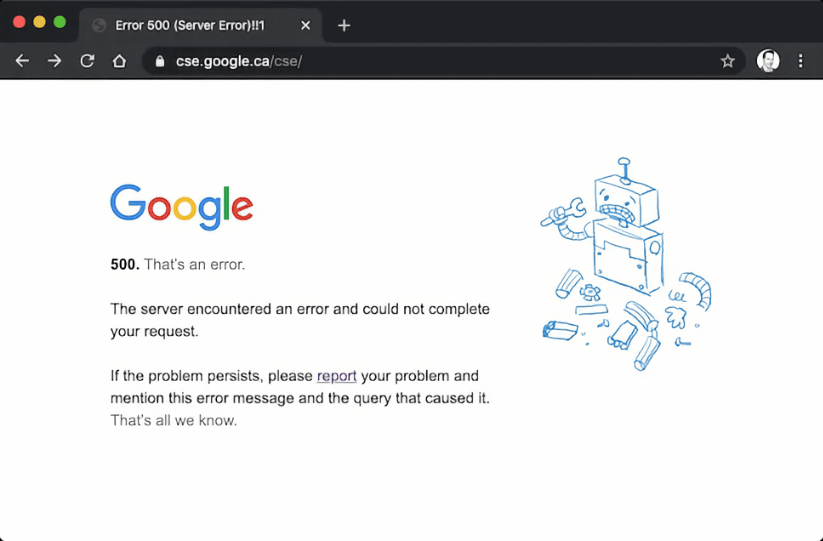
Image Credit: https://blog.hubspot.com/
502 Error
A 502 server error is sometimes referred to as a 502 Bad Gateway error. This is a HTTP status code that occurs when one server acting as a gateway, or a proxy, cannot receive a valid response from the other server further on in the request chain.
Possible 502 Bad Gateway causes include server outages, overloaded or misconfigured proxy servers, issues with content delivery networks (CDNs), or problems with the backend server that is handling the request.
It usually indicates a communication problem between the different servers in your network.
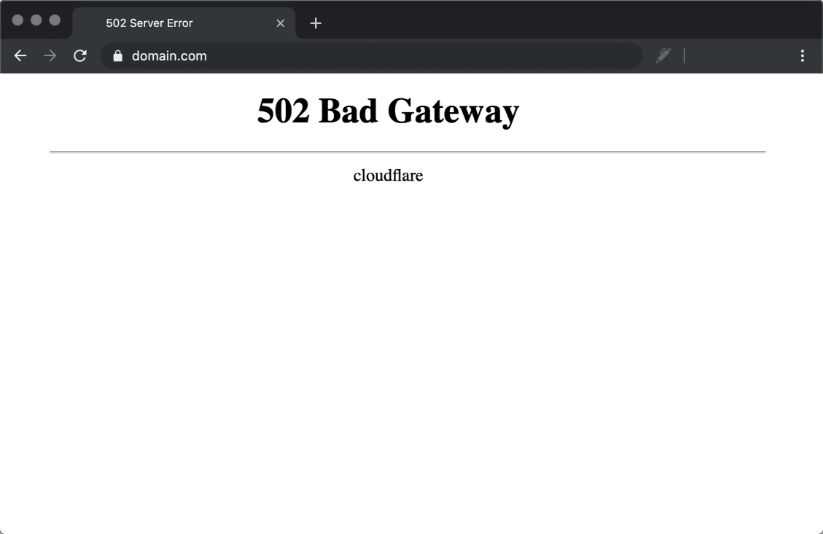
Image Credit: https://kinsta.com/
503 Error
A 503 server error is also referred to as a Service Unavailable error. This is a status code that happens when a server is temporarily unavailable to handle a client’s request.
This can happen due to temporary server maintenance, overloading or any temporary issues with the server’s caching.
It informs users and search engines that the server is currently unavailable and won’t be able to fulfil any requests, but it is expected to become available again in the near future once the issue is resolved.
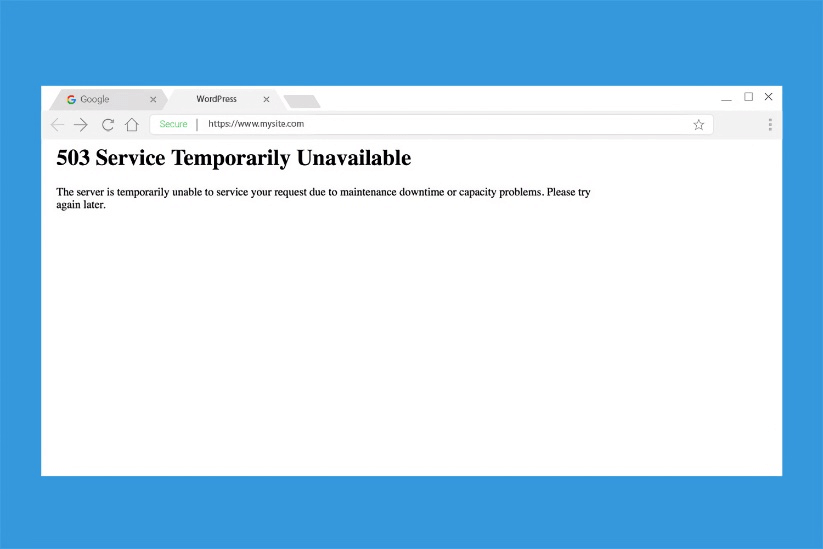
Image Credit: https://www.wpkube.com/
504 Error
A 504 error is also known as a Gateway Timeout error. It’s the status code that occurs when a server, acting as a gateway or proxy, does not receive a timely response from an upstream server whilst trying to fulfil a client’s request.
This usually happens when the upstream server is slow to respond or experiencing any issues with connectivity.
504 Gateway Timeout errors may result in a delay in loading your web pages, potentially frustrating visitors and impacting the user experience of your website.
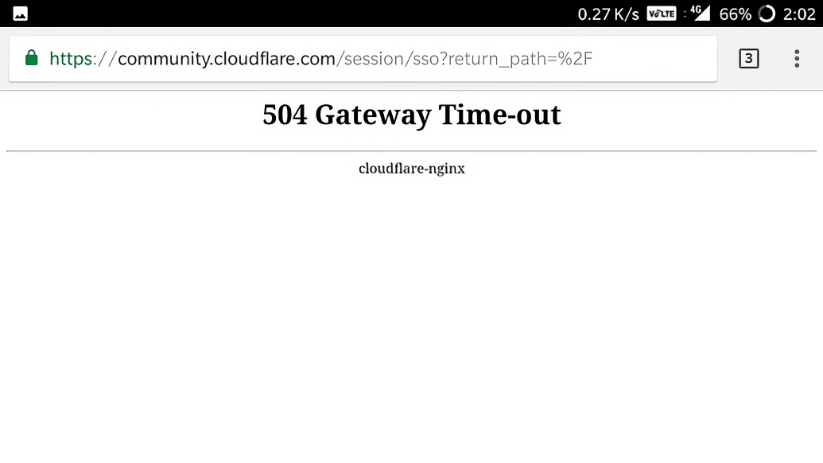
Image Credit: https://blog.hubspot.com/
509 Error
509 errors are also known as 509 Bandwidth Limit Exceeded errors.
An important distinction here, when compared to the errors listed above, is that this is not a standard HTTP status code, but rather a message indicating that the website has surpassed its allocated bandwidth or data transfer limit with its hosting provider.
This can happen if the website experiences a sudden surge in traffic, and will happen more commonly on shared hosting plans with limited resources. Shared hosting plans may mean the hosting provider restricts data transfer to prevent overages and website outages, hence why you may see this kind of error more.

Image Credit: https://my.pc-freak.net/
524 Error
A 524 server error you will find is also commonly referred to as a 524 A Timeout Occurred error. This is a HTTP status code that will typically occur when a web server that is acting as a gateway or a proxy does not receive a timely response from the origin server while attempting to fulfil a client request.
Possible causes for this error include slow or unresponsive origin servers, network connectivity issues between the gateway and the origin server, or excessive load on the origin server.
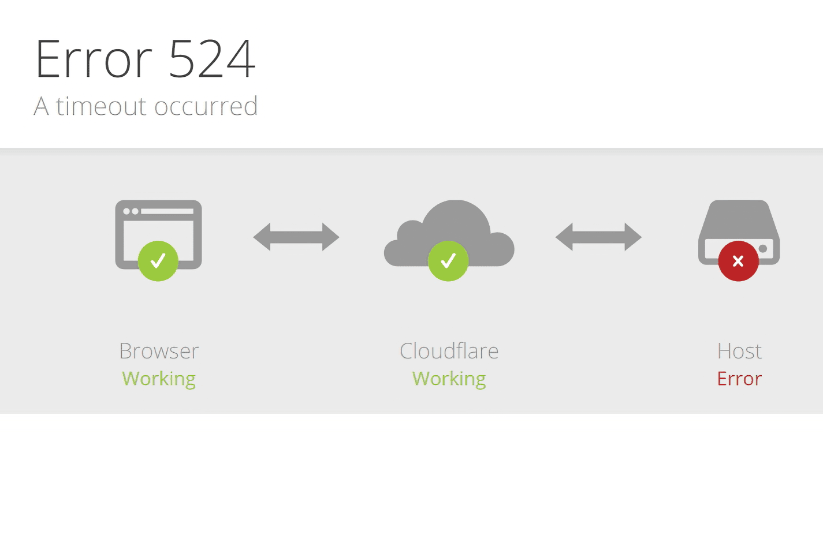
Image Credit: https://www.lifewire.com/
How to Fix these Errors
In this section, we will take you through some of the steps you can take to fix these errors that you may come across whilst working on your website or viewing your Google Search Console page indexing report.
We’ve put this list in order, so the first thing in the list is the first thing you need to try and the last mention within the list is your last resort.
Test Your Website
The absolute first step you should take when dealing with 5xx errors on your website is to clear your browser cache and open the page/s in a new window. This will allow you to see whether the problem is persisting, or whether it has been solved already. You should also clear your browser’s cookies before doing this, as well, as it will give you a clear picture of what is going on at the time you test your website.
At times, especially when looking at your page indexing report in Google Search Console, you can be given an outdated view of what is going on. You may be seeing a page in your indexing report that is working again. If that’s the case, all you need to do is validate the fix within GSC.
Disable Faulty WordPress Plugins
Disabling any faulty WordPress plugins is another step you could take in order to resolve 5xx server problems that your website is experiencing. Particularly, this step is going to solve any errors that are related to server overload or any misconfigurations within the server.
Faulty plugins can consume excessive server resources, leading to a 500 Internal Server error, or other 5xx errors, when the server struggles to handle the increased load.
By deactivating these problematic plugins, you will be able to reduce the strain on the server, enhancing its overall performance and reliability. This action can also resolve errors like 502 Bad Gateway errors and 503 Service Unavailable errors, which may occur when a plugin negatively impacts the server’s ability to respond to requests.
Undo Any Recent Server Updates
Undoing recent server updates can potentially help fix certain 5xx server errors, particularly those that are caused by updates that introduce compatibility issues, misconfigurations, or software bugs.
This step may resolve errors such as the 500 Internal Server error, 502 Bad Gateway, and 503 Service Unavailable errors, which can occur when server changes disrupt the normal operation of your website.
By reverting to a previous server configuration or software version that was known to be stable, you can get rid of the specific issues introduced by recent updates and restore your server to a working state.
Fix Errors in your .Htaccess File
Fixing any errors in your .htaccess file is an important step to resolving specific 5xx server errors, most notably the 500 Internal Server error and potentially the 503 Service Unavailable error, too.
The .htaccess file is a configuration file that controls various aspects of your web server, and if it contains any syntax errors or directives that are wrong, it can disrupt your server’s functionality.
Correcting these issues ensures that the server you use can process requests correctly, leading to the resolution of these tricky 5xx errors.
Upgrade Your Server
Upgrading your server is, in some cases, an important step in addressing server errors. Especially 5xx errors that indicate problems on the server side.
Server errors in the 5xx range, such as the 500 Internal Server error, often occur due to issues like server overload, insufficient resources or outdated software. Upgrading your server can help alleviate these problems by providing more processing power, memory, and up-to-date software solutions.
This improved infrastructure can better handle incoming requests, reducing the chances of encountering errors and enhancing the overall reliability of your web services.
Upgrading your server is likely to solve the following server errors:
- 500 Internal Server errors.
- 502 Bad Gateway errors.
- 503 Service Unavailable errors.
- 504 Gateway Timeout errors.
Contact Your Hosting Provider
In the instance of using a shared hosting environment, there is a good possibility that any 5xx errors that are occurring have appeared because of an oversight from your service provider. If this is the case, you will need to contact your hosting provider in order to ask them to resolve the issue, as this is not necessarily your responsibility to solve as it is not related to something you have done on your website.
This step will also apply if the steps outlined above have not worked. If you have tried to take these steps yourself and none of these have worked, have a conversation with your hosting provider as they will have more access to the server’s configuration than you do. They may be able to help!
In conclusion, addressing and resolving 5xx server errors that are appearing in your Google Search Console page indexing report, is essential for maintaining your website’s search visibility, user experience and overall success.
These errors can have a detrimental impact on your site’s performance and reputation, potentially leading to de-indexing, lower search rankings, losses of organic traffic and revenue loss.
This article has covered the significance of these errors, their causes, and specific steps to fix them. By following these steps and actively addressing server errors, you can ensure your website remains reliable, accessible and conducive to a positive online presence.
Want to make the most of your Google Search Console data? Use it to develop an SEO testing strategy for your website, and keep your data for all time, rather than just 16 months? Give SEOTesting a try! We’re currently offering a 14-day free trial, with unlimited access to the tool, with no credit card details required to sign-up. So give us a try today, and take your website to the next level.

